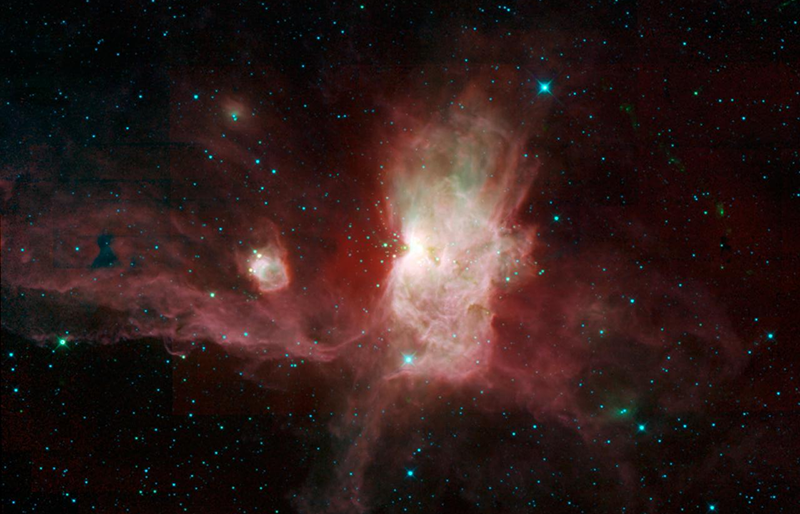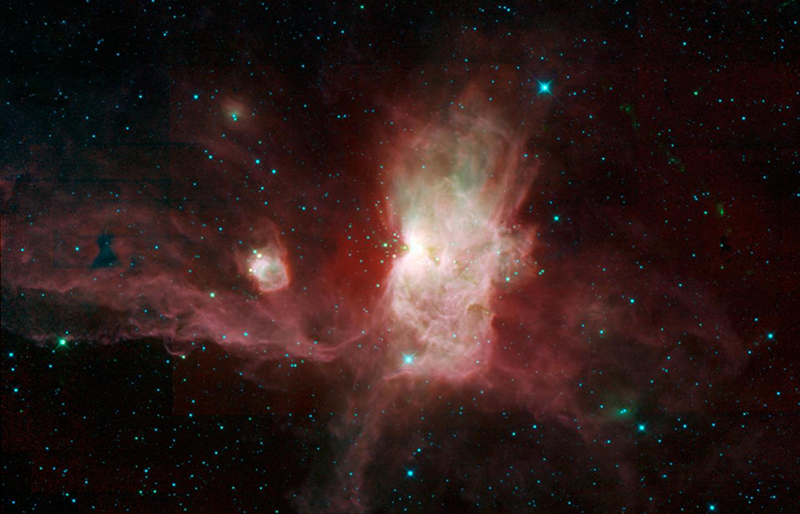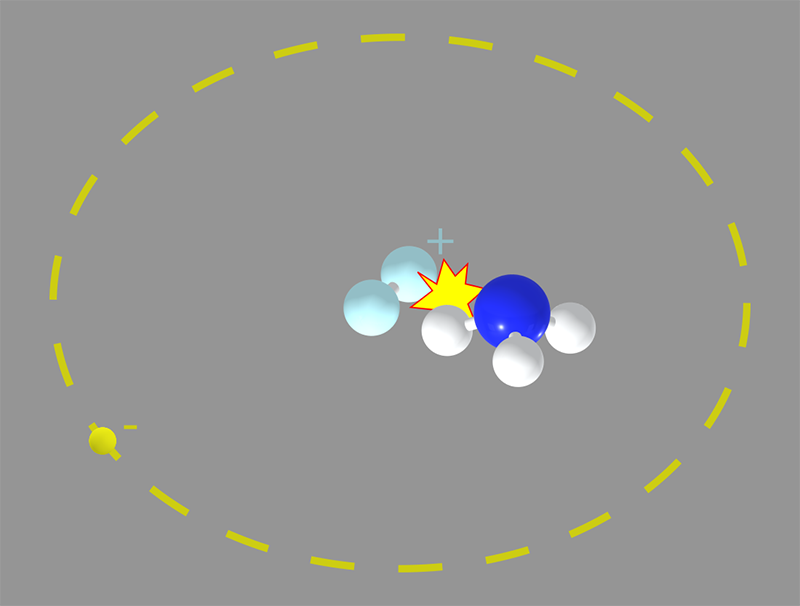Cold Chemistry is Different
Many common small molecules are formed in interstellar space, and their low temperatures are expected to have profound effects on their chemical reactions because of quantum-mechanical effects that are masked at higher temperatures. Researchers have now demonstrated some of these cold chemistry phenomena—such as the effects of molecular rotation and collision energy on reaction rates—in a reaction between a hydrogen ion and an ammonia molecule in the lab. The results, while intuitively surprising at first glance, can be explained by a careful theoretical analysis of the quantum chemistry.
Measuring reaction rates at low temperatures is useful for testing quantum-chemical theory because in those conditions molecules may occupy only a few well-defined quantum states. Such experiments could also offer insights into chemical processes in the cold clouds of gas in star-forming regions of interstellar space, where many of the simple molecules that make up solar systems are formed. But low-temperature experiments are difficult, especially for charged atoms and molecules (ions), because they are very sensitive to stray electric fields in the environment, which accelerate and heat up the ions.
Given this difficulty, “until recently, hardly any experimental information on ion–molecule reactions at low temperatures was available, and theoretical predictions made many years ago were never tested,” says physical chemist Frédéric Merkt of the Swiss Federal Institute of Technology (ETH) in Zurich. To address this challenge, Merkt and his ETH colleagues studied reactions between two molecules that are common in interstellar clouds: hydrogen ions ( H+2) and ammonia ( NH3). They used heavy hydrogen (deuterium) molecular ions, D+2, because it is easier to match the speeds of these heavier molecules with the slower ammonia molecules and thereby to minimize their collision energy. In the reactions, D+2 steals an electron from NH3 and may also exchange a hydrogen for a deuterium, making HD and NH2D+. The researchers also looked at the collision with deuterated ammonia, ND3.
The ETH team allowed molecular beams of their two reactant molecules to converge in a reaction chamber and then measured the product molecules. To make the reactions insensitive to stray electric fields, Merkt and colleagues used a trick. Starting with D2, they effectively converted it to D+2, not by removing one of the electrons, but by boosting it with a laser pulse to a very-high-energy state called a Rydberg state, in which the electron is held at a long distance from the nucleus. This procedure puts the ion inside a large “electron shell,” keeping it electrically neutral to the outside world—which makes it immune to stray fields—even though a colliding ammonia molecule “sees” just the ion when it gets close.
Crucially, the researchers could not only control the collision energies of the molecules—equivalent to temperatures from 50 K down to near absolute zero—but they could also selectively probe the various quantum rotational states, which are distinguished by how fast the molecules rotate. They found that as the collision energy decreased or the ammonia’s rotational energy increased, the reaction rates increased. Both outcomes are the opposite of what generally occurs for reactions at high temperatures: Lower collision energies tend to lower the chance of reaction, while faster-spinning NH3 molecules would average out their nonuniform charge distribution and so make the interaction with the D+2 ions weaker. Finally, ND3 reacted faster than NH3, even though the heavier deuterium atoms are more “sluggish.”
The researchers showed that all of these outcomes, while contrary to naive expectations, can be explained by accounting for how the different quantum states affect the electrostatic interaction between D+2and an approaching ammonia molecule. This electrical attraction dominates how the molecules “feel” one another in this reaction and thus largely determines the reaction rate. For example, in certain quantum states, rotational excitation can actually increase the strength of the ammonia molecule’s electrostatic interaction with D+2.
“The fact that the rate increases with rotational energy was a surprise to me,” says physical chemist Tim Softley of the University of Birmingham in the UK. “Perhaps the lesson to learn is that simple physical explanations sometimes do not tell the whole story.”
“This is beautiful chemical physics,” says physical chemist David Clary of the University of Oxford, UK. “Very few experiments have been able to get down to the very low collision energies to confirm the theory. The results show that there is still much to discover about ion–molecule reactions, especially at low temperatures.”
By providing a sensitive test of theory, Merkt says that the results can help to predict how the reaction rates of a broad range of ion–molecule reactions in cold, dense interstellar molecular clouds depend on temperature.
–Philip Ball
Philip Ball is a freelance science writer in London. His latest book is How Life Works (Picador, 2024).
References
- R. Hahn et al., “Opposite effects of the rotational and translational energy on the rates of ion-molecule reactions near 0 K: The D+2 + NH3 and D+2 + ND3 reactions,” Phys. Rev. X 14, 011034 (2024).






